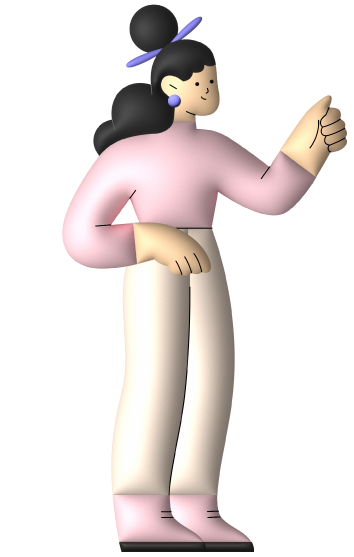
- July 22, 2023
- branding, Digital Marketing
- Graphic Designing
What is motion graphics?
In order to convey a message or tell a story, animated visuals are typically created using a combination of text, graphics, and sound. This is known as motion graphics. A wide range of media, including television, cinema, advertising, video games, and web content, can incorporate motion graphics.
Animations, special effects, and other visual components are frequently created using motion graphics software and tools. Simple animated logos or infographics can be produced, as well as more intricate 3D animations and visual effects.
Motion graphics are frequently employed to improve and elevate video content, increasing its aesthetic appeal and viewer engagement. They can be used to simplify and aesthetically appealingly communicate difficult information,
Types of motion graphics

Motion graphics come in a wide variety of forms, each with a particular aesthetic and function.
- Kinetic Typography: In this kind of motion graphics, the text is animated in inventive and aesthetically pleasing ways, for as by moving letters, switching fonts, and including special effects.
- Infographics: Infographics are a common form of motion graphics that employ data visualization to present complex information simply and attractively.
- Explainer Videos: Explainer videos combine animation and audio narration to clearly and entertainingly explain a concept or product.
- Title Sequences: In movies and television shows, title sequences are used to introduce the actors and crew, establish the tone of the narrative, and arouse interest.
Importance of motion graphics for engagement of the targeted audience

Targeted audiences can be engaged and drawn into content with the use of motion graphics. Here are a few explanations:
- Visual Appeal: Motion graphics have a pleasing appearance and can increase the audience’s attention and involvement in the information. The interest and entertainment of the audience can be maintained via the employment of dynamic animations, graphics, and effects. Motion graphics can be used to simply and effectively tell a story or deliver a message. They can assist in simplifying complex information so that a larger audience can more easily understand it.
- Branding: Motion graphics can support brand identification and establish a unified visual language throughout a variety of platforms and media. As a result, brand familiarity and loyalty may increase.
- Social media: Short-form material is preferred on social media sites, where motion graphics are particularly successful. These can aid in grabbing viewers’ interest and motivating them to interact with the information.
Motion graphics can provide viewers with an experience that they will remember. When compared to static images or text, the use of animation and special effects can help material stand out and be more memorable.
History of motion graphics
When animators and filmmakers first started experimenting with new methods to produce more dynamic and interesting visual content, that is when motion graphics got their start. The following significant occasions in the development of motion graphics, helped to know what is motion graphics.
- Early 1900s Silent Film Era: To make their pictures more lively and visually appealing, filmmakers started incorporating animation and special effects.
- Title Sequences: To make movie openings more interesting in the 1920s, title sequences grew in complexity and started adding animation and graphics. Motion graphics were utilized to generate TV ads and programme opening titles as television rose to popularity as a visual content delivery medium in the 1950s.
- Computer graphics: The use of digital tools in motion graphics was made possible by the creation of the first computer-generated visuals and animations in the 1960s.
- Music Videos: In the 1980s, music videos gained popularity as a platform for motion graphics experimentation and the production of visually spectacular content.
- Digital Revolution: The 1990s and 2000s saw a boom in motion graphics and animation as a result of the development of new tools and software that made it simpler than ever to produce visually compelling material.
How does motion graphics help in branding?

Motion graphics can be a powerful tool for branding, as they help to create a consistent visual language that reinforces brand identity across different platforms and mediums. Here are some ways that motion graphics can help with branding:
- Visual Identity: Motion graphics can aid in the establishment and reinforcement of a brand’s visual identity. By using consistent colors, typography, and graphic elements across different mediums, motion graphics can create a cohesive and recognizable brand image.
- Storytelling: Motion graphics can help to tell a brand’s story in a visually engaging way. By using animation and special effects, motion graphics can bring a brand’s message to life and make it more memorable.
- Emotional Connection: Motion graphics can help to create an emotional connection with viewers. By using storytelling and visual elements, motion graphics can create a positive association with a brand and help to build brand loyalty.
- Consistency: Motion graphics can help to create a consistent brand experience across different platforms and mediums. By using the same visual language and messaging, motion graphics can help to reinforce a brand’s values and message.
- Versatility: From social media ads to television commercials, motion graphics can be employed in a variety of scenarios. This versatility allows brands to reach a wider audience and create a more cohesive brand image.
Best motion graphics design agency in Bangalore
Choosing a motion graphics design studio is a crucial decision since the quality of their work may have a big impact on the image and communication efficacy of your company. When choosing a motion graphics design agency, consider the following procedures and factors:
- Define your objectives: Before you begin looking for a motion graphics studio, you should have a clear grasp of your project’s aims and what you hope to achieve with motion graphics. Outline the scope of the project, target audience, and important messages.
- Portfolio and expertise: Examine the agency’s portfolio to assess its expertise and originality in motion graphics. Look for variety in their work, such as diverse styles, industries, and project types. Check to see if they have expertise producing content similar to what you require.
- Client references and testimonials: Look for client testimonials or reviews on the agency’s website or on other platforms. If possible, contact previous clients to obtain feedback and insights on the agency’s performance, dependability, and communication.
- Creativity and innovation: Motion graphics are all about visual storytelling and creativity. Look for a company that can bring new ideas to the table and push the limits of visual communication.
- Communication and collaboration: A good agency should be easy to communicate with and collaborative in nature. They should be open to hearing your ideas and suggestions while also offering their experience to improve the final result.
- Budget and pricing: Ask for full pricing information and make sure it fits within your budget. Be wary of agencies that undercharge greatly, as this may imply poor quality service or hidden charges.
- Project timetable: Discuss the projected timeline for the project with the agency and verify it corresponds with your deadlines. It is critical to deliver on time, especially if you have time-sensitive marketing campaigns or events.
- Technical capabilities: Confirm that the agency has the software and technology needed to handle your project competently. This involves having up-to-date animation, rendering, and other technologies.
- Flexibility and scalability: Consider whether the agency will be able to meet your future requirements. A scalable agency can be useful if you intend to collaborate on many projects or grow your video marketing efforts.
- Compatibility and cultural fit: Select an agency that shares your beliefs and culture. A positive working connection is essential for a successful and seamless partnership.
Motion Graphics Today
Today, motion graphics are employed in a variety of media, including social media, advertising, and film and television. Here are a few typical applications for motion graphics:
- Motion graphics are frequently utilised in movies and television to generate opening titles, clarify difficult ideas, and add visual appeal to the subject matter.
- Because they are able to clearly communicate a brand’s message and hold the interest of the viewer, it is important to know what is motion graphics in today’s age, as they are a popular choice for advertising campaigns.
- To create interesting content and advertise goods and services, motion graphics are frequently utilised on social media sites like Instagram, Facebook, and TikTok.
- To emphasise essential points and make the information more interesting and remember, motion graphics can be utilised in presentations.
- Educational materials can make use of motion graphics to visually simplify complex ideas.
- Motion graphics is a tool that may be used in product design to create instructional movies, interactive user interfaces, and other visual content.
- To create dynamic visual effects and animations, motion graphics are frequently employed in game design. Motion graphics are a flexible technique that can be applied in a variety of settings to produce aesthetically appealing, engaging content.
Conclusion
In general, using motion graphics is a good technique to draw in and hold the interest of your intended audience. They can support brand identification and increase brand recognition while also aiding in the visual and engaging communication of a message or story. Know what is motion graphics and how they are employed in a variety of media nowadays, including social media, advertising, cinema and television.
The growth of technology and the need to produce more captivating and visually appealing content have propelled the creation of motion graphics. Overall, motion graphics are an effective tool for branding, as they can help to create a consistent visual language, tell a brand’s story in an engaging way, and create an emotional connection with viewers.











